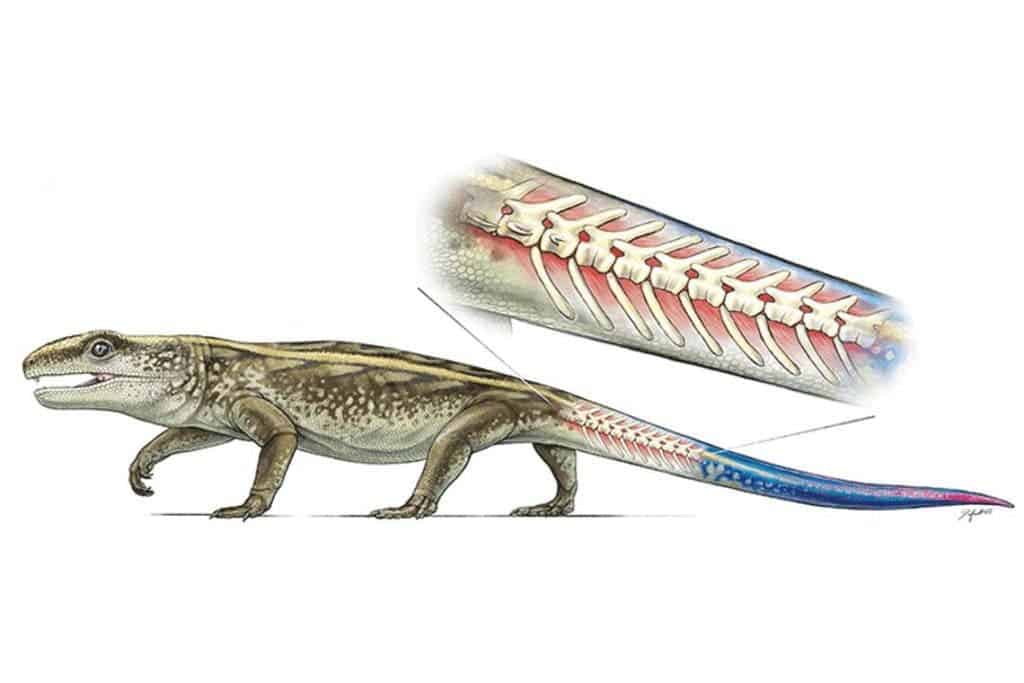An ancient lizard, which lived more than 250 million years ago, could detach its tail if it was bitten by a predator. This is the first creature that we know of that employed this escape strategy, employed today by modern lizard species such as skinks.

Researchers at the University of Toronto Mississauga closely studied an extinct group of lizards known as captorhinidae. These lizards, which ranged in size from very small to large, are recognizable by the generally triangular shape of their skull when viewed dorsally. They first appeared in the fossil record during the Late Carboniferous in North America, from where the reptiles spread all over the world. All captorhinids became extinct by the Permian.
As omnivores and herbivores, the reptiles would often find themselves preyed by carnivorous amphibians and early mammals while foraging for food. As such, these creatures had to find ways to adapt to a competitive lifestyle. When they weren’t agile enough to escape an encounter with a hungry predator that grabbed them by the tail, the ancient reptiles would escape by discarding it. Professor Robert Reisz and colleagues at the University of Toronto Mississauga learned this after they found captorhinids has breakable tail vertebrae.
The researchers examined more than 70 tail vertebrae from both juveniles and adults and found multiple cracks in the tail vertebrae which acted like the perforated lines between two sheets of paper towels. With the help of various paleontological techniques, the scientists determined that these cracks formed naturally as the vertebrae developed and weren’t the result of some injury. The cracks in adults tended to fuse up while those found in juveniles were easier to break, which makes sense since young reptiles are more vulnerable to predation.
“If a predator grabbed hold of one of these reptiles, the vertebra would break at the crack and the tail would drop off, allowing the captorhinid to escape relatively unharmed,” said Reisz, who is the senior author of the paper published in the journal Scientific Reports.
“Being the only reptiles with such an escape strategy may have been a key to their success, because they were the most common reptiles of their time, and by the end of the Permian period 251 million years ago, captorhinids had dispersed across the supercontinent Pangea,” he added.
This trait disappeared with the last captorhinid about 250 million years ago. It took lizards a lot of time before they re-evolved this feature 70 million years ago. Today, modern lizards like skinks still retain this ability.


